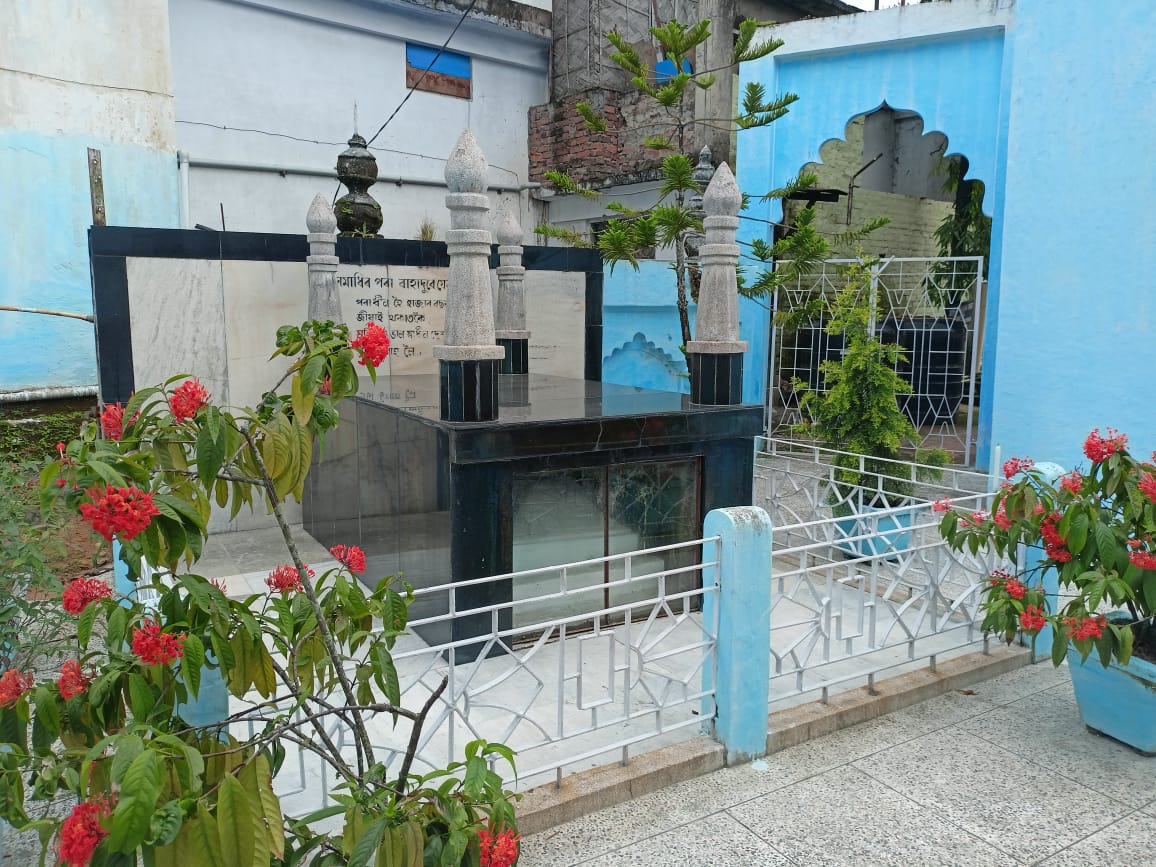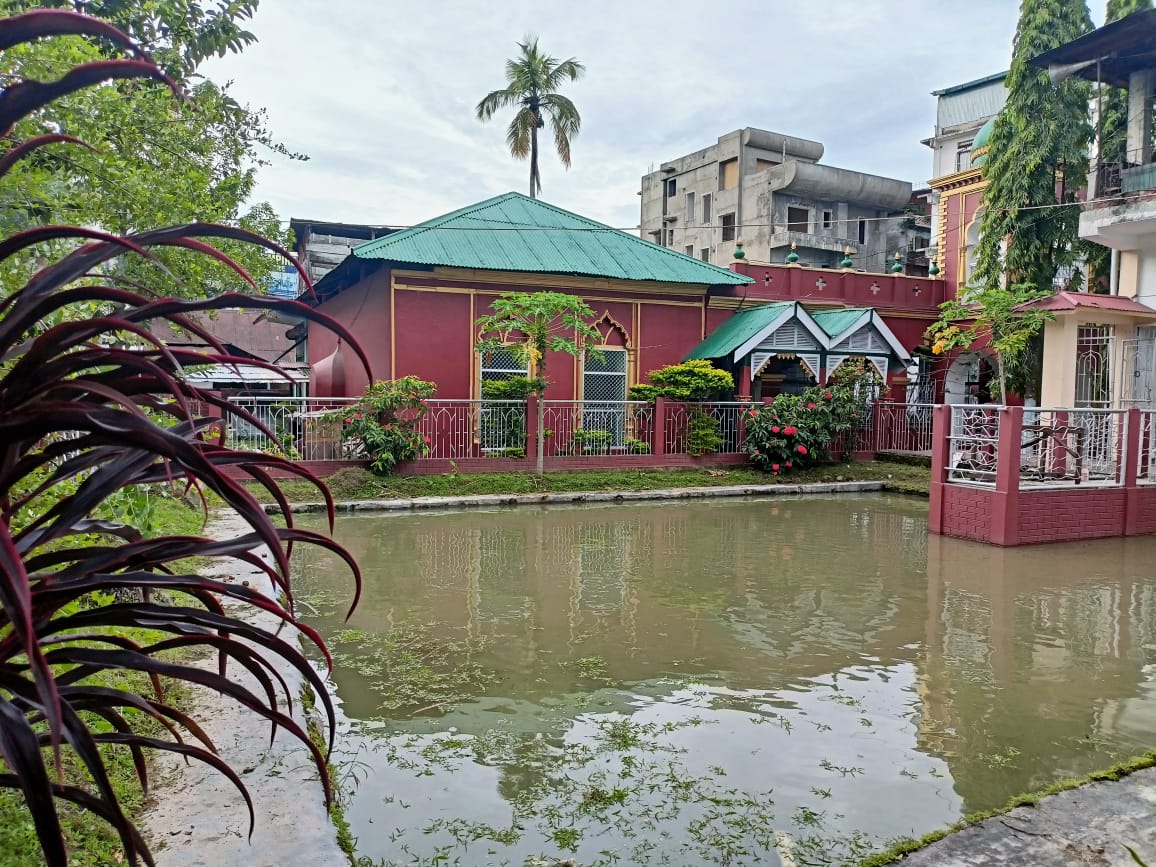.webp)
Smita Bhattaharyya/Jorahat
The 150th-anniversary celebration of the historic Na-Masjid in Eastern Assam’s Jorhat district is turning out to be an all-religion affair. Interestingly, the mosque is located in the premises where the mortal remains of famous freedom fighter Bahadur Gaon Burah also lay interned.
Bahadur Gaon Burah, Maniram Dewan, and Piyali Baruah, had participated in the 1857 revolt against the British. They were caught and tried in court for treason. Sentenced to death, Dewan and Baruah were hanged Jorhat’s Fancy (Phansi) Ali Road jail in 1858, Bahadur, whose real name was Bahadil, was sent to Kaala Pani (Andamans) and condemned to life.
Bahadur Gaon Burah was appointed as village headman of Jorhat and Titabar, a position that earned him the popular title of Bahadur.
Bahadur was born in 1819 and died at his son’s residence at Daflating in Titabar, now a subdivision of Jorhat, in 1891 after returning from Kalapani after his sentence was commuted.
He was buried at New Balibat in the Jorhat district.

The Grave of Bahadur Gaon Burah
The name of the mosque Na Masjid is often mistaken to mean new (na) as it was constructed as it was built much after the one at Old Balibat. The word Na stands for nine individuals who built this mosque in 1871.
They are: Dr Amjad Hussain, Faizu Rahman, Haji Jallaluddin, Ahmed Ali, Mohammad Shah, Samadar, Azimmuddin Ahmed Sirajuddin Ahmed, and Kampur Sardar.
The land of the mosque belonged to Puhor, a childless man who soon after donating, left for Mecca along with his wife and spent his life there.
The Na Masjid was initially a bamboo structure and much later it was made into a concrete structure, and a concrete wall was made in 1935-36. The premises has a pond with plenty of fish.
Prominent personalities from the Muslim and non-Muslim communities are currently visiting the Na-Masjid to take part in the ongoing celebrations.
In a recent event, Veer Lachit Sena's Jorhat district president Sidhartha Borua recited Syed Abdul Malik's poem Moi Axomiya (I am an Assamese).

The Na masjid with its fish pond
Participating in the same event Chancellor of the University of Science and Technology, Meghalaya (USTM), Mahbubul Hoque, stressed the importance of education. He called upon the Muslim community to acquire education to become service providers instead of service seekers.
“We are living in a time where it has become imperative for us to be able to lead others of our community to enlightenment. In our community, there are quite a few who have achieved success in medical science and other fields. We should be successful in every sphere so that society at large does not keep on ignoring us,” Hoque said.
Hoque, who has set up universities and colleges in Assam and Meghalaya, said the Muslims should follow the Christian missionaries’ model of spreading education.
“The Christian missionaries have set up schools, colleges, and universities across the world to impart quality education. Assam and North East are not an exception. The majority of renowned educational institutions in the North-East such as Don Bosco School, St. Mary’s School have been set up by the Christian missionaries. They have converted Christianity from a religion to a service. Why cannot we (the Muslims) do it? Quality education will produce quality human resources. Quality manpower can easily find jobs and even create employment for others,” Hoque said.
He also released a souvenir, Taranga, to commemorate the 150th anniversary of Na Masjid.
Dr. Monirul Hussain, an academician, spoke in detail about the advent of Islam into Assam. Toufiqul Hussain, chairman of the 150-year Na Masjid Organising Committee told people about a library that has been opened within the mosque premises. He asked people to make use of the library that had books on Islam and different subjects.
Hussain said many events will be organized in the coming days to spread the message of Assam’s traditions of Hindu-Muslim unity.
